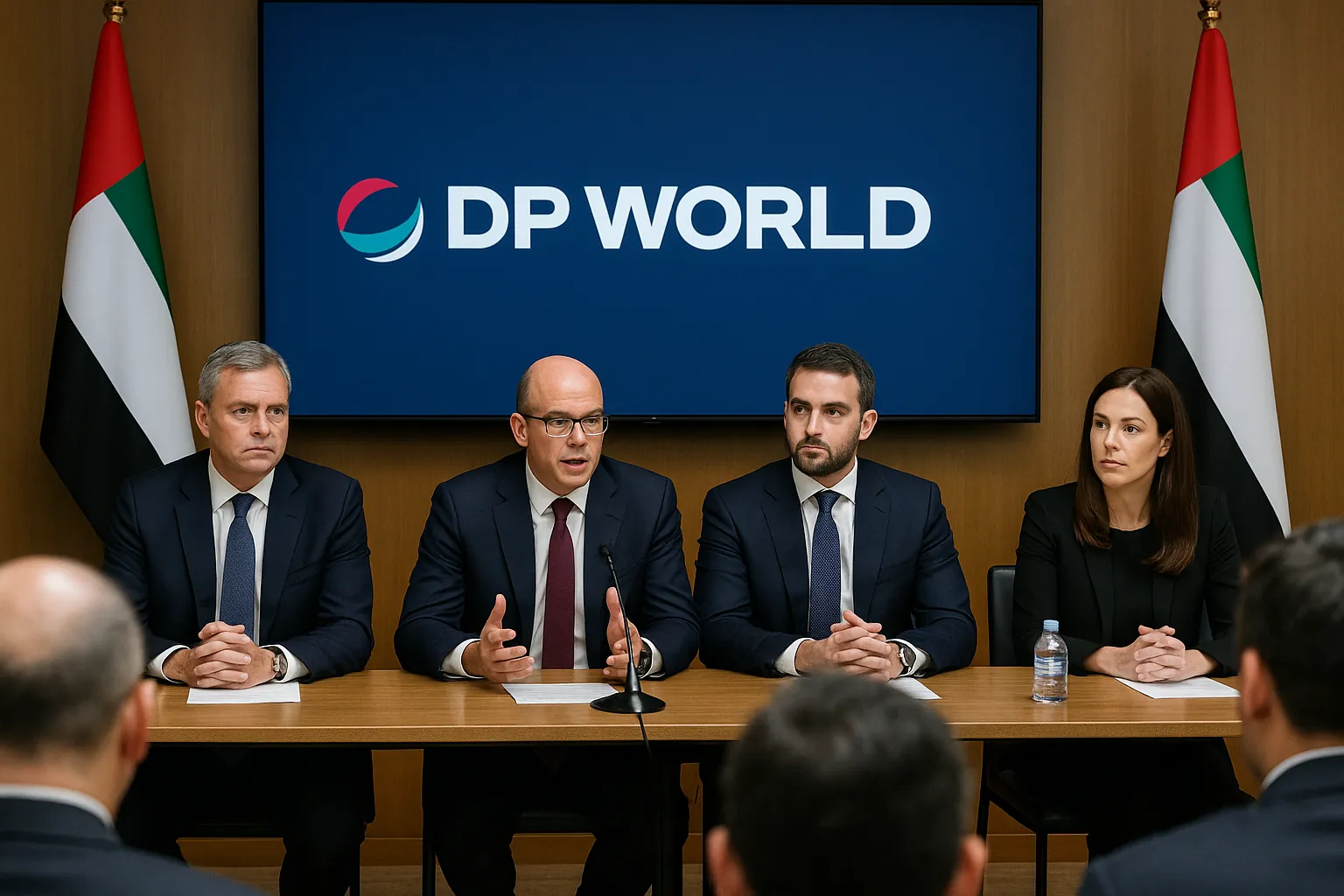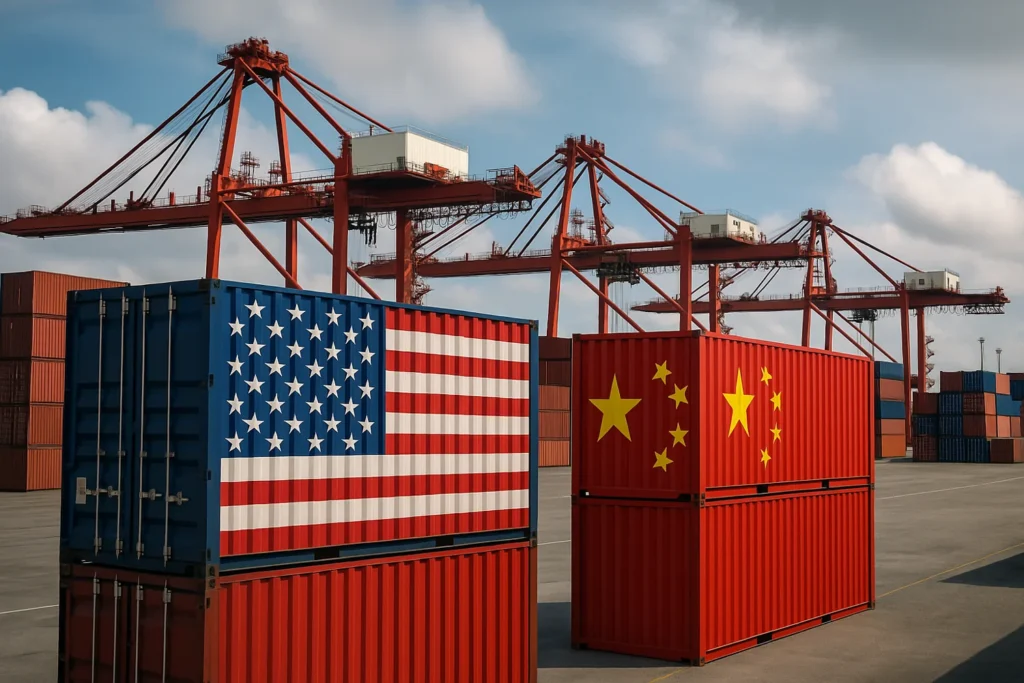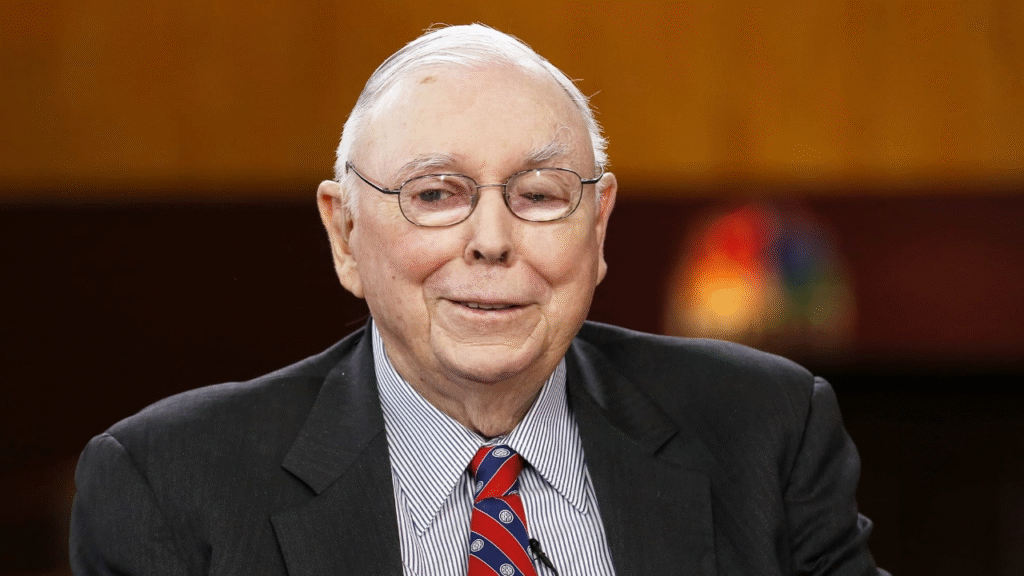Tariff wars have long been treated as temporary skirmishes in the grand theatre of global commerce. Yet according to DP World’s Chief Operating Officer, these “skirmishes” are now a structural feature of modern trade — pushing costs up while paradoxically fueling growth. The phrase “DP World tariff wars” encapsulates the global paradox: costs escalate, yet volumes move, profits persist, and the illusion of stability continues.
Context: the mainstream narrative of resilience
DP World, one of the world’s largest logistics and port operators, reported continued expansion in throughput across Asia, the Middle East, and Africa despite rising tariffs between economic blocs. The company’s narrative, widely echoed by business media, paints a story of endurance: resilient trade flows, flexible supply chains, and a confident leadership steering through the storm.
In official statements, DP World executives underline efficiency gains, digital transformation, and geographical diversification as shields against volatility. The idea is simple — tariffs hurt, but global demand remains robust. According to Reuters, the company expects growth to remain “strong despite elevated costs.”
This resilience, however, conceals contradictions. When DP World says tariff wars raise costs but growth endures, it is not describing a miracle — it’s describing the inflationary architecture of the new global order.
Oppositional Argument: the myth of healthy growth
The mainstream insists on resilience. But resilience at what cost? DP World’s expansion is built not on frictionless trade, but on its ability to monetize disruption. Every new customs check, every rerouted shipping line, every geopolitical tariff creates friction — and friction is profitable for logistics giants.
Behind the claim that “growth remains strong,” lies a deeper reality: the global economy is paying more for the same movement of goods. Consumers, small exporters, and emerging markets absorb these costs while large intermediaries like DP World thrive on inefficiency. The term “DP World tariff wars” isn’t a headline — it’s a business model.
Tariffs were supposed to punish unfair trade; instead, they created a new rent-seeking ecosystem. When supply chains fragment, DP World’s network becomes indispensable. The company benefits from chaos it claims to mitigate. That’s the quiet irony behind this resilience story — it’s resilience for shareholders, not for the system.
Analytical Breakdown: causes and consequences
To understand why DP World can boast of “strong growth” amid rising tariffs, one must look at the mechanics of global trade. Each container now crosses more checkpoints, more paperwork, more intermediaries. Where the pre-2018 world prized efficiency and volume, the post-2020 reality rewards flexibility and control.
DP World’s diversification — from Dubai to Dakar, from Jebel Ali to Southampton — means it captures revenue wherever trade flows pivot. Tariff realignments between the U.S., China, and the European Union force rerouting through non-traditional corridors. African ports gain relevance. Gulf free zones boom.
But this expansion hides an inflationary loop. Higher costs on freight insurance, energy, and customs clearance feed into the final price of goods. Global inflation’s stubborn persistence since 2022 is tied not only to energy markets or monetary policy, but also to logistics markups born from tariff friction.
Economists at the IMF recently warned that “fragmented trade systems raise long-term costs by up to 7% of global GDP.” That figure reflects what DP World’s “growth” really means: more spending to achieve the same output. The company thrives, but efficiency dies.
In short, the “DP World tariff wars” narrative mirrors the post-pandemic world: growth figures detached from prosperity, volume detached from value.
Human Perspective: the invisible cost bearers
For the dockworker in Karachi, the customs officer in Lagos, or the exporter in Manila, tariff wars aren’t abstract policy tools — they are unpaid hours, delayed payments, and lost contracts. While DP World celebrates “resilient growth,” small traders face crippling uncertainty.
Take the Kenyan coffee exporter whose shipment to Europe must now pass through alternate routes due to EU-Africa tariff adjustments. His cost per container rose 18% in 2024. Meanwhile, DP World’s Nairobi-Mombasa corridor logged record throughput. That’s the systemic inversion: corporate resilience powered by grassroots fragility.
In interviews, logistics workers describe longer queues, tighter schedules, and relentless pressure to maintain “efficiency.” When the COO of DP World hails “growth despite tariffs,” he’s also describing an industry squeezing human labor to preserve margins in an era of artificial friction.
This isn’t resilience — it’s redistribution. Wealth flows upward through the arteries of the supply chain, leaving the smaller veins starved.
Counterarguments
Defenders of DP World argue that without its global reach, trade paralysis would be far worse. They claim logistics multinationals serve as shock absorbers — enabling continuity when geopolitics breaks systems. There’s truth in that: without players like DP World, shipping chaos after COVID-19 could have collapsed entire sectors.
Yet this argument mirrors the logic of too-big-to-fail banks. A company becomes essential precisely because the system it profits from remains dysfunctional. Tariff escalation ensures dependence on logistical giants. The very policies that claim to protect national industries instead consolidate corporate monopolies across borders.
Even if DP World truly “absorbs shocks,” it does so at a price — transforming geopolitical tension into a commodity.
The illusion of diversification
DP World’s strategy rests on diversification across regions and sectors — ports, logistics parks, free zones, digital platforms. But diversification is not immunity. It’s merely the art of spreading exposure. The company’s narrative of strength ignores how tariff walls multiply systemic vulnerabilities.
Consider China’s retaliation against U.S. semiconductor tariffs or India’s import restrictions on electronics. Every new barrier redirects flows toward alternative hubs, often through DP World’s terminals in the UAE or Africa. This looks like agility — until the next tariff wave hits, and new routes must again be built.
The logistics map becomes a constantly shifting chessboard. Growth numbers stay positive, but capital costs skyrocket. Debt-financed expansion in high-risk regions like East Africa or Latin America amplifies exposure. What DP World calls “resilience” may soon resemble overextension.
Insiders within the logistics industry whisper that the next vulnerability isn’t tariffs — it’s debt. As borrowing costs rise, port operators juggling dozens of multi-billion projects could face a liquidity crunch. That’s the hidden fault line beneath the celebratory tone of “DP World tariff wars.”
Geopolitical dimension: trade as weapon
Tariffs today serve less as economic correctives and more as geopolitical tools. The U.S.–China tariff standoff, the EU’s carbon border tax, and India’s retaliatory duties have turned logistics into a diplomatic battlefield. DP World’s growth, therefore, is entangled with statecraft.
When countries weaponize trade, logistics providers become geopolitical actors — willing or not. DP World’s operations in Djibouti, Yemen, and the Red Sea illustrate how commercial infrastructure doubles as strategic leverage. Washington and Beijing both court Gulf logistics partners as part of their supply-chain security strategy.
This geopolitical entanglement makes tariff wars a perpetual feature, not a temporary disruption. The world has entered a phase of managed inefficiency — a deliberate slowdown to serve strategic aims.
DP World’s ability to profit within this managed chaos demonstrates capitalism’s extraordinary adaptability. Yet it also exposes its moral bankruptcy: a system that celebrates “growth” even when built on obstruction.
The broader economic contradiction
Economists call this “resilient stagnation.” Productivity stalls, but GDP rises through inflated prices and duplicated logistics. Companies report record revenue, but societies experience stagnating living standards.
DP World’s success thus mirrors global inequality. Every tariff line adds to the ledger of protectionism while feeding the profits of logistical intermediaries. The paradox is brutal: the more nations fight to “protect” their economies, the more they empower the gatekeepers of global trade.
In that sense, “DP World tariff wars” become a symbol of late-stage globalization — not open markets, but fortified corridors where only the largest survive.
Conclusion: the price of resilience
DP World’s COO calls rising tariffs a challenge but not a threat. That confidence reflects corporate mastery over disorder — and the world’s quiet acceptance of inefficiency as normal.
But the narrative of “growth despite tariff wars” should alarm us. It means our economies now rely on friction to function. The logistics sector profits from geopolitical paralysis, turning global fragmentation into an engine of profit.
The future of trade might not be faster or freer — it may simply be costlier. The real question is whether society can afford the illusion of growth built on systemic inefficiency.
If DP World’s model defines the next decade, the world economy won’t collapse — it will erode, slowly, profitably, and by design.
External Links
72 views






